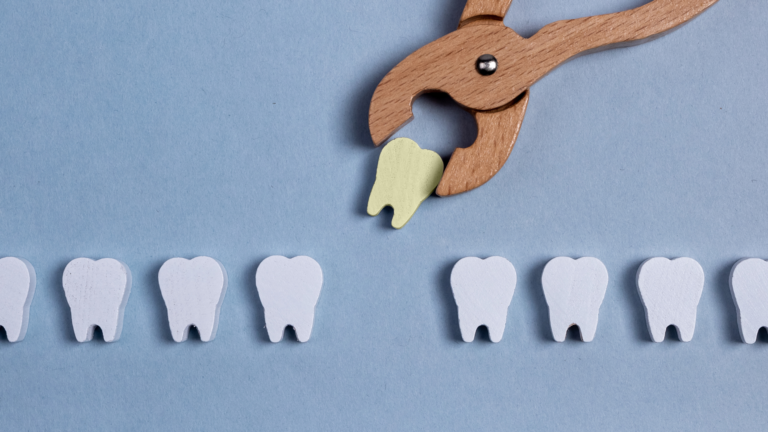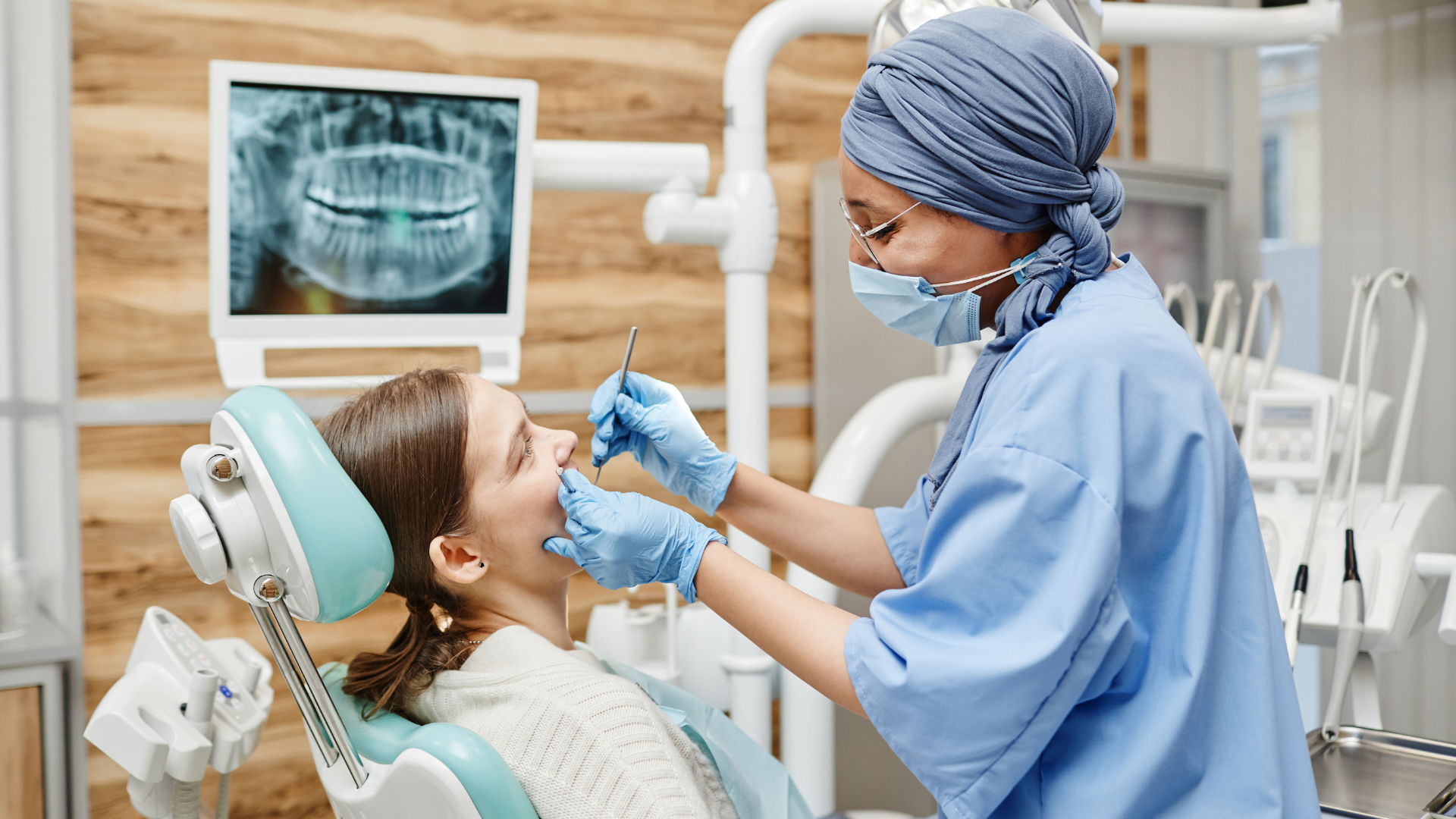What to Avoid After Tooth Extraction
Understanding the Healing Process
The Role of Blood Clots in Recovery
After a tooth extraction, the formation of a blood clot at the site of surgery is crucial for healing. The blood clot serves as a protective layer over the underlying bone and nerve endings in the empty tooth socket. It also provides the foundation for the growth of new tissue.
- A blood clot helps to stop the bleeding post-extraction.
- It acts as a barrier against infection.
- The clot supports the development of new bone and soft tissue.
Ensuring the blood clot remains undisturbed is essential for a complication-free recovery. Avoid activities that might dislodge the clot, such as vigorous rinsing, sucking on straws, or smoking.
The absence or loss of a blood clot can lead to a painful condition known as dry socket. If you experience severe pain, visible bone in the socket, or an unpleasant taste in your mouth, contact your dentist immediately.
Timeline of Tissue Regeneration
After a tooth extraction, the body immediately begins the healing process. The first 24 hours are crucial for blood clot formation, which is the foundation for tissue regeneration. Over the next few days, the body works to repair the extraction site, with significant healing typically observed within one to two weeks.
The timeline for tissue regeneration is generally as follows:
- Day 1-3: Formation of a blood clot to stop bleeding and begin healing.
- Day 4-10: Soft tissue starts to close over the extraction site.
- Week 2-4: Bone begins to develop in the area of the extraction.
- Month 1-2: Soft tissue healing completes, and bone continues to mature and fill in.
It’s important to note that individual healing times can vary based on factors such as age, overall health, and the complexity of the extraction. Avoiding activities that can dislodge the blood clot, such as vigorous rinsing, sucking actions, or smoking, is essential for a smooth recovery.
Patients should follow their dentist’s specific recommendations and be aware of their body’s healing process to ensure the best outcome. Regular check-ups can help monitor the progress and address any concerns promptly.
Factors That Can Affect Healing
Several factors can influence the healing process after a tooth extraction, potentially leading to a longer recovery time or complications. Individual health conditions, such as diabetes or immune system disorders, can significantly impact healing. Additionally, lifestyle choices like smoking or excessive alcohol consumption are known to delay the healing process.
- Age: Older patients may experience slower healing.
- Nutrition: A balanced diet is crucial for recovery.
- Oral Hygiene: Poor practices can lead to infection.
- Medications: Certain drugs can interfere with clot formation.
It’s essential to follow your dentist’s post-operative instructions closely and to be aware of how these factors can affect your recovery. Adjusting your habits and taking proactive steps can help ensure a smooth healing process.
Dietary Considerations and Restrictions
Foods to Avoid Immediately After Surgery
After a tooth extraction, it’s crucial to avoid certain foods that can disrupt the healing process. Hot, spicy, or crunchy foods can irritate the extraction site and should be avoided to prevent complications.
- Hot beverages and foods
- Spicy dishes
- Crunchy or hard foods like nuts and chips
- Sticky or chewy candies
- Alcoholic beverages
It is also important to steer clear of foods that require vigorous chewing, as this can dislodge the blood clot that is essential for healing.
In addition to these specific types of foods, it’s advisable to avoid using a straw for drinking, as the suction can remove the blood clot from the socket. Adhering to these dietary restrictions can significantly aid in a smoother and quicker recovery.
Safe Foods to Eat During Recovery
After a tooth extraction, choosing the right foods is crucial for a smooth recovery. Soft and easy-to-chew foods are generally recommended to minimize discomfort and aid in the healing process. Here’s a list of safe foods to consider:
- Applesauce
- Mashed potatoes
- Scrambled eggs
- Greek yogurt
- Smoothies
- Broth-based soups
These foods not only provide nourishment but also ensure that the extraction site is not disturbed. It’s important to maintain a balanced diet to support your body’s healing capabilities.
Remember to eat slowly and chew with caution, especially on the side opposite the extraction site to prevent any damage to the area.
As your mouth heals, you can gradually reintroduce more solid foods into your diet. However, always follow the specific recommendations provided by your dentist or oral surgeon.
Hydration and Alcohol Consumption
Maintaining proper hydration is crucial for recovery after tooth extraction. Drinking plenty of water helps in the healing process, ensuring that tissues remain moist and resilient. It is recommended to sip water slowly and avoid using a straw, as the suction can dislodge the blood clot that is essential for healing.
Alcohol consumption should be avoided for at least 24 hours post-extraction, as it can interfere with the blood clotting process and delay healing. Additionally, alcohol can interact negatively with any prescribed pain medications.
It’s important to balance fluid intake to prevent dehydration, which can lead to further complications and discomfort.
Here is a simple guideline to follow for fluid intake after tooth extraction:
- Drink at least 8 glasses of water per day.
- Avoid alcoholic beverages for the first 24 hours.
- Steer clear of hot drinks that might dissolve the blood clot.
- Refrain from using straws to prevent dislodging the clot.
Physical Activity and Rest
Recommended Rest Period
After a tooth extraction, it’s crucial to allow your body the time it needs to heal. Rest is an essential component of the recovery process and should not be underestimated. Immediately following the procedure, patients are advised to rest for at least 24 to 48 hours. During this period, it’s important to keep your head elevated to reduce bleeding and swelling.
Resting not only promotes clot formation but also minimizes the risk of complications such as dry socket and infection.
Here are some guidelines to help you plan your rest period:
- Avoid strenuous activities and heavy lifting for at least 3 days.
- Gradually increase activity levels based on comfort and healing progress.
- Listen to your body and rest whenever you feel fatigued.
Remember, the recommended rest period can vary depending on individual health conditions and the complexity of the extraction. Always follow the specific instructions provided by your dentist or oral surgeon.
Risks of Exertion and Exercise
After a tooth extraction, it’s crucial to minimize physical exertion to prevent complications. Engaging in strenuous activities can lead to increased bleeding, swelling, and discomfort. It can also disrupt the formation of a blood clot at the extraction site, which is essential for healing.
- Avoid heavy lifting and vigorous exercise for at least 24 to 48 hours.
- Gradually reintroduce light activities, such as walking, before resuming your regular exercise routine.
Remember, listening to your body and allowing it time to heal is paramount. If you experience any throbbing or bleeding during an activity, stop immediately and rest.
It’s important to follow your dentist’s specific recommendations regarding physical activity. They may adjust these guidelines based on your individual healing process and overall health.

Guidelines for Resuming Normal Activities
After a tooth extraction, it’s crucial to ease back into your daily routine to prevent complications. Listen to your body and avoid activities that cause discomfort or strain. It’s generally recommended to wait at least 48-72 hours before engaging in any strenuous activities. However, this can vary based on individual healing rates and the complexity of the extraction.
Remember, the goal is to avoid dislodging the blood clot at the extraction site, which is essential for proper healing.
Here’s a simple timeline to help you gauge when to resume certain activities:
- Day 1-2: Rest and limit movement; no heavy lifting or vigorous exercise.
- Day 3-4: Gradual increase in light activities; still avoid strenuous exercise.
- Day 5-7: If healing is progressing well, slowly reintroduce more physical tasks.
Always follow your dentist’s specific recommendations, as they may adjust this timeline based on your situation. If you experience any pain, swelling, or bleeding during your return to normal activities, it’s important to contact your dentist immediately.
Oral Hygiene and Care Post-Extraction
Proper Cleaning Techniques
After a tooth extraction, it’s crucial to keep the extraction site clean to prevent infection and promote healing. Avoid using a regular toothbrush near the extraction site for the first 72 hours to prevent dislodging the blood clot that’s essential for healing.
- Rinse gently with warm salt water after meals and before bed.
- Use a soft-bristled toothbrush to clean the rest of your mouth.
- Avoid spitting forcefully or using straws, as the suction can disturb the clot.
It’s important to maintain oral hygiene after an extraction, but be gentle around the surgical site to avoid complications.
Follow these guidelines carefully and consult with your dentist if you’re unsure about any aspect of your post-extraction care.
Use of Mouthwash and Saltwater Rinses
After a tooth extraction, it’s crucial to keep the mouth clean to prevent infection while being gentle to the healing tissue. Rinsing with a saltwater solution can aid in the healing process by reducing bacteria and soothing the extraction site. Typically, a saltwater rinse should consist of 1/2 teaspoon of salt dissolved in 8 ounces of warm water.
Begin using the saltwater rinse the day after surgery, and continue with gentle rinsing at least 2-3 times a day, especially after meals.
While commercial mouthwashes can also be used, they should be alcohol-free to avoid irritation. Here’s a simple guideline for mouthwash use post-extraction:
- Choose an alcohol-free mouthwash.
- Dilute with water if recommended by your dentist.
- Rinse gently to avoid dislodging the blood clot.
It’s important to follow your dentist’s specific instructions for oral care after an extraction. If you experience any unusual symptoms, such as increased pain or signs of infection, contact your dental professional immediately.
When to Resume Brushing and Flossing
Resuming normal oral hygiene practices after tooth extraction is crucial for preventing infection and promoting healing. However, it’s important to be gentle and avoid disturbing the extraction site. You can typically start brushing your teeth again 24 hours after surgery, but you should steer clear of the surgical area for the first few days.
- Day 1: Avoid brushing, flossing, or rinsing vigorously.
- Day 2-3: Begin brushing teeth gently, but not the extraction site.
- Day 4: Carefully clean the extraction site with a soft-bristled brush.
Remember to use a soft-bristled toothbrush and to be gentle when brushing around the extraction site. Avoid any vigorous or aggressive brushing motions that could dislodge the blood clot.
Flossing should be resumed alongside brushing but ensure you are cautious around the areas adjacent to the healing socket. If you experience any pain or bleeding while brushing or fressing, stop immediately and consult your dentist.
Recognizing and Avoiding Complications
Signs of Infection and Dry Socket
After a tooth extraction, it’s crucial to monitor the site for signs of infection or the occurrence of a dry socket, which can impede healing and cause significant discomfort. Infection may present with symptoms such as persistent pain, swelling, and fever, while a dry socket typically manifests as a throbbing pain that doesn’t subside and can radiate to the ear.
Be vigilant for any foul odors or tastes emanating from the extraction site, as these can also be indicative of infection.
Recognizing these signs early is key to preventing further complications:
- Persistent or worsening pain
- Visible absence of a blood clot at the extraction site
- Swelling that increases after 2-3 days
- Pus or discharge from the site
- Elevated body temperature
If you experience any of these symptoms, it’s important to contact your dentist promptly for assessment and treatment.
Managing Pain and Swelling
After a tooth extraction, managing pain and swelling is crucial for a comfortable recovery. Applying a cold compress to the affected area can significantly reduce swelling and provide pain relief. Use the compress in intervals of 15 minutes on and 15 minutes off to prevent skin damage.
Pain management should be approached with caution. Over-the-counter pain relievers, such as ibuprofen or acetaminophen, can be effective. However, it’s important to adhere to the recommended dosages and consult with your dentist if pain persists. Avoid aspirin as it can increase bleeding.
Swelling typically peaks 48 to 72 hours after the extraction. If swelling or pain worsens after this period, it may indicate a complication, and you should contact your dentist.
Here is a list of tips to help manage pain and swelling:
- Elevate your head with extra pillows while resting to reduce swelling.
- Avoid hot foods and drinks which can exacerbate swelling.
- Refrain from smoking or using straws, as the suction can dislodge the blood clot and delay healing.
When to Contact Your Dentist
After a tooth extraction, it’s crucial to monitor your recovery and be aware of any signs that may necessitate contacting your dentist. If you experience severe pain, bleeding that doesn’t subside, or signs of an infection, it’s important to seek professional advice promptly. The best dentists in Manhattan Beach are equipped to handle post-extraction complications and can provide the necessary care to ensure a smooth recovery.
- Persistent or worsening pain
- Excessive bleeding beyond 24 hours
- Signs of infection (e.g., fever, foul taste, pus)
- Swelling that doesn’t decrease after a few days
- Difficulty in swallowing or breathing
Remember, timely intervention by a dental professional can prevent further complications and promote faster healing. Do not hesitate to reach out to your dentist if you’re concerned about your recovery process.
Frequently Asked Questions
How long does it take for a tooth extraction site to heal?
The initial healing of the gum tissue can take 3-4 weeks, but the bone can take up to 6 months to fully heal. However, most people can resume normal activities within a couple of days.
What foods should I avoid after a tooth extraction?
Avoid hard, chewy, hot, or spicy foods that might get stuck in the socket or irritate the wound. Stick to soft foods and liquids for the first few days.
Can I brush my teeth after tooth extraction?
Yes, but be gentle around the extraction site. Avoid brushing the clot directly for the first 24 hours to prevent dislodging it.
Is it normal to experience pain after a tooth extraction?
Some pain and discomfort are normal after an extraction. Your dentist will likely prescribe pain medication. If pain persists or worsens, it may be a sign of complications and you should contact your dentist.
When can I start exercising after a tooth extraction?
It’s best to avoid vigorous exercise for the first 24-48 hours to prevent bleeding and aid in clot formation. Gradually resume normal activities as comfort allows.
What are the signs of infection or dry socket?
Signs of infection include severe pain, swelling, fever, or pus from the extraction site. Dry socket is characterized by a throbbing pain that doesn’t improve with pain medication, and you may also notice a foul odor. Contact your dentist if you experience these symptoms.






